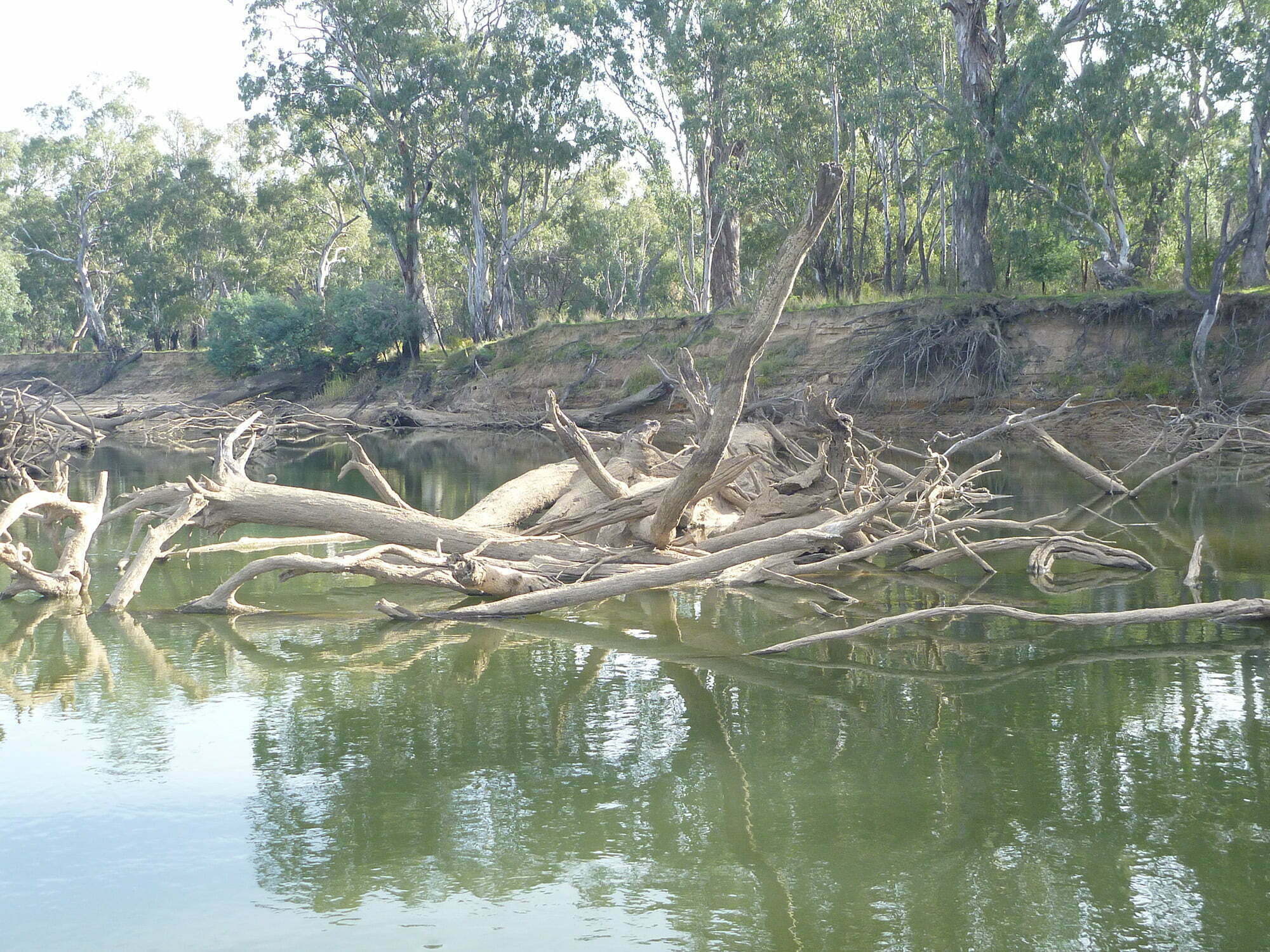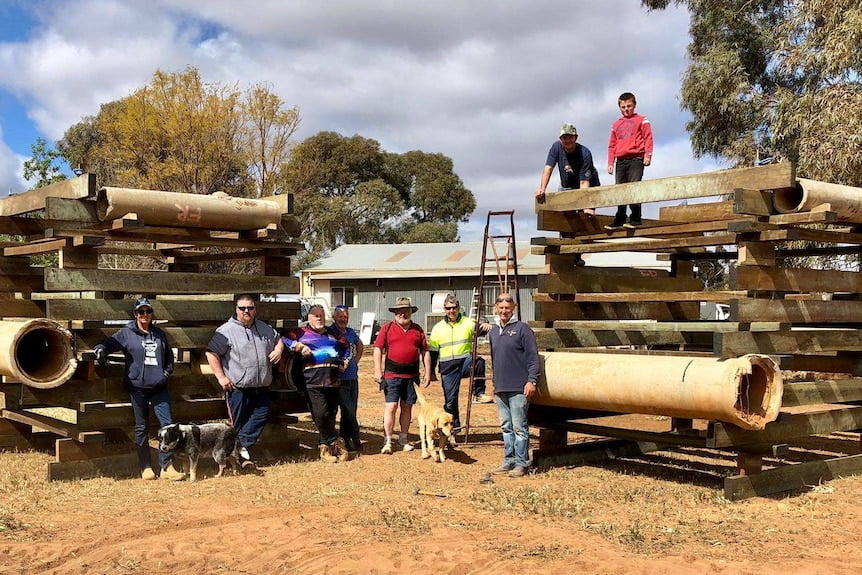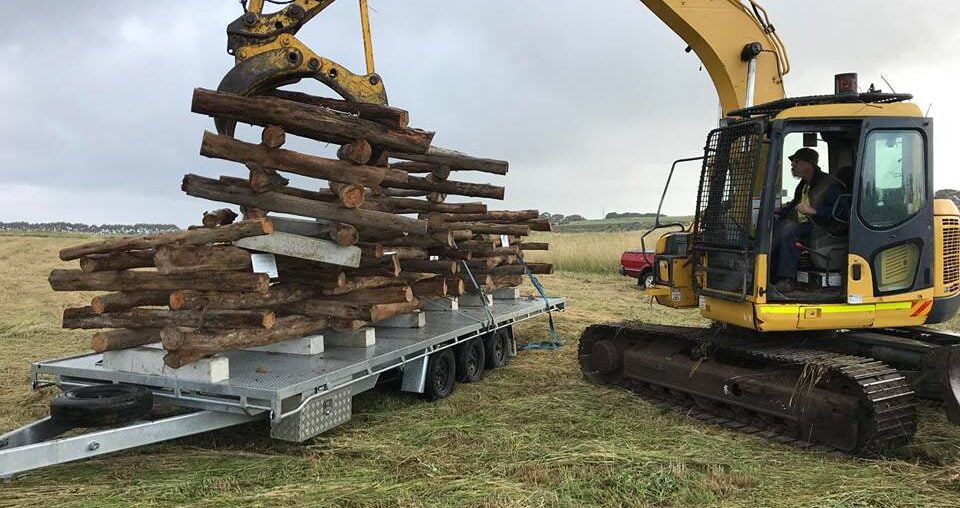Where do Australia’s native fish live? Perhaps in Murray Cod condos or, Flathead Galaxis flats, or even Murray Hardyhead houses? These cozy dwellings are also known as fish hotels which mimic the original habitat of the fish in instances of removal or intervention.
They are dubbed fish hotels as most fish only stay a brief period of time before they grow and become strong enough to move downstream. The iconic Murray Cod is known to haunt a single snag for extended periods of time, lurking in its shadows awaiting prey, hiding from predators, seeking refuge from intense flows, and laying its eggs in the safety of its woody exterior.
Snags
Snags are fallen trees, branches and root masses that are found in our rivers. Also known as large woody debris, snags result from trees on the riverbank either falling in or dropping their branches. This can occur because of flooding, bank erosion, wind or limb shedding and is a natural process.

Unfortunately, since European settlement, millions of snags were removed through large scale de-snagging operations to make way for the introduction of paddle steamers to be introduced to our rivers. Snags were also falsely believed to cause large-scale erosion in riverbanks and increase the incidence of flooding by reducing the capacity of flows a waterway could hold. Although snags may contribute to small-scale and short-term erosion, in many cases the presence of natural loads of snags may reduce erosion by protecting the riverbanks. The removal of fish habitats such as snags, led to many implications for our native fish and overall river health.
In order to combat the unjust removal of snags, the development of fish hotels began. Fish hotels are man-made structures that are designed to provide fish with additional habitat. These hotels are constructed using a cement base with several wooden sleepers stacked on top. This creates an artificial reef that caters to a wide variety of fish allowing them to rest and grow. Small fish are able to hide away in small nooks whilst larger fish can await prey in the shadows.

Fish Hotels in Action
The Murray-Darling Basin’s largest man-made fish hotel was constructed in 2018 by community groups in South Australia. The project consisted of installing a three-meter fish hotel structure into the Murray River near the town of Kingston on Murray. The project was driven by coordinator Kym Manning who saw SA falling behind other states, stating that SA was ‘long behind’ in terms of habitat restoration.
Click here to watch the installation of Australia’s largest fish hotel

The hotel is a creation of Manning’s own original ideas. “The pipes were my own idea as the Dep of Environment and Water and Dep of Infrastructure and Transport made the stipulation that my structure had to either be spiked or weighted with 2 tonne of concrete to hold it in position. The pipes (weighing almost 1 tonne each) are hopefully homes for Murray Cod. Holes are smashed in them to let in light and turbulence. The rubble from those holes is saved to make a concrete slurry to pour over the pipes, making a gravelly bed for the nesting cod (hopefully).” Manning has also put in 5 40ft gum trees with pipes strapped within the structure with the above principal for Murray Cod.

When asked about the effectiveness of his fish hotel Manning stated, “I know they work because I’ve had customers in our shop that have caught fish on the reefs that I put in the lake and they’re about the tenth the size of this [structure].” Fish ecologist Dr Travis Howson, however, states that recording the success of projects like Manning’s are difficult and we rely on limited fish surveys and reports from recreational fishers to see benefits. The need for more research into the benefits of fish hotels is apparent with the existing literature gap, however, first-hand accounts from anglers appear promising.
Despite not having exact statistics, we know fish hotels provide added habitat complexity for native fish and other aquatic species in areas where their habitat may have been removed or depleted. The hotels are instrumental in creating space for fish to breed, habituate, seek refuge, feed, and simply put their fins up!
Resources
Main photo: Fish hotels loaded onto a trailer for installation.
Source: Ozfish.




